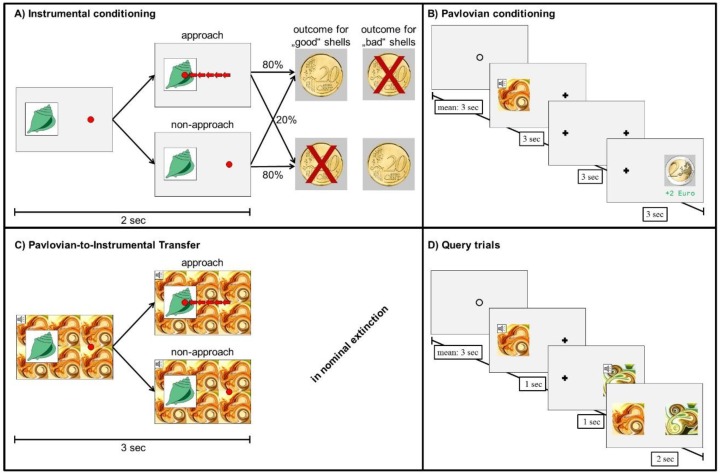Figure 2.
Pavlovian-to-instrumental Transfer (PIT) task. (A): Instrumental training: collecting a ’good’ shell was rewarded in 80% while not collecting a ‘good’ shell punished in 80%. The opposite reinforcement contingencies applied to ’bad’ shells. Red arrows indicate the five or more button presses required to approach and collect the presented shell. By trial and error, subjects learned to collect or not to collect three out of six shells. (B): Pavlovian conditioning: subjects passively viewed a conditioned stimulus (CS), which was deterministically followed by an unconditioned stimulus (US). As CS, a compound of a tone and five fractal-like visual stimulus was used. USs were pictures of a coin (−2€, −1€, 0€, +1€, +2€). (C): Transfer: subjects were asked for the instrumental response, while the background was tiled with the CS. Trials with drink-related background stimuli are not displayed. (D): Query trials: Subjects were asked to choose the better (i.e., that was associated with the highest reward or lowest punishment during Pavlovian conditioning) between sequentially presented CSs.

